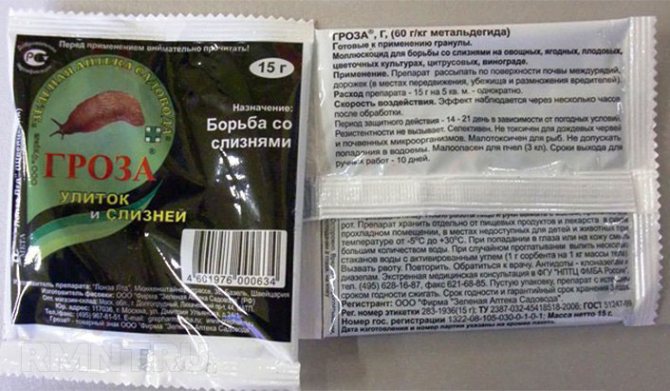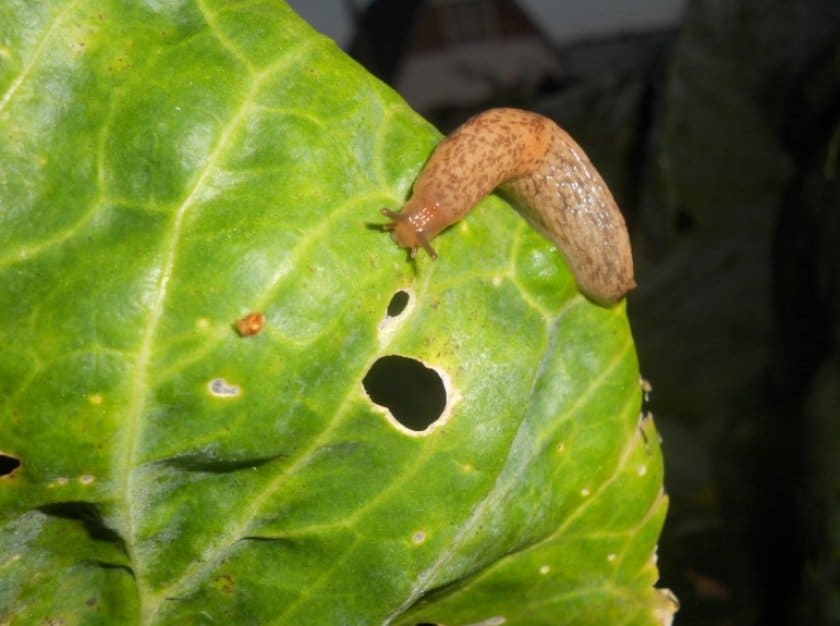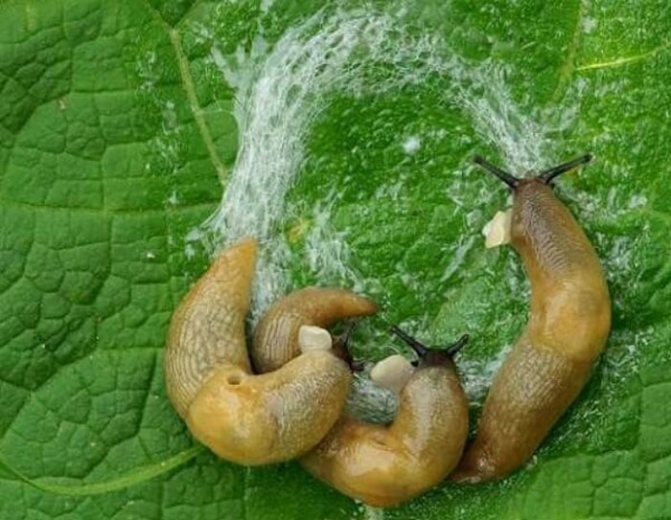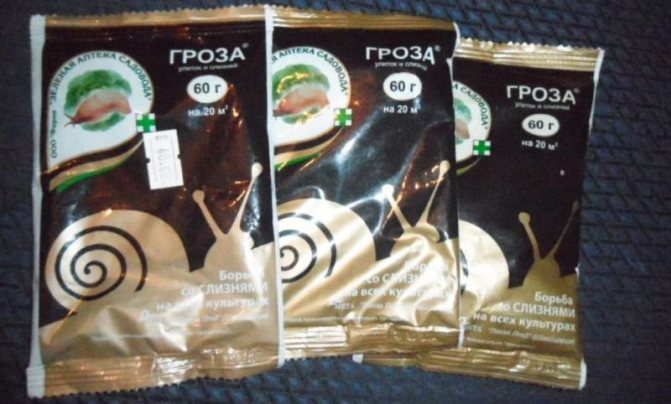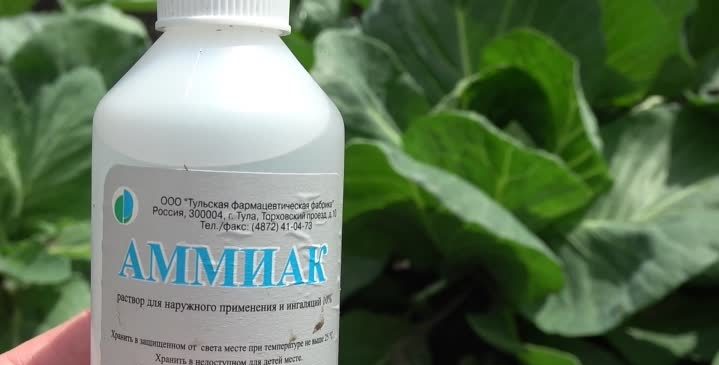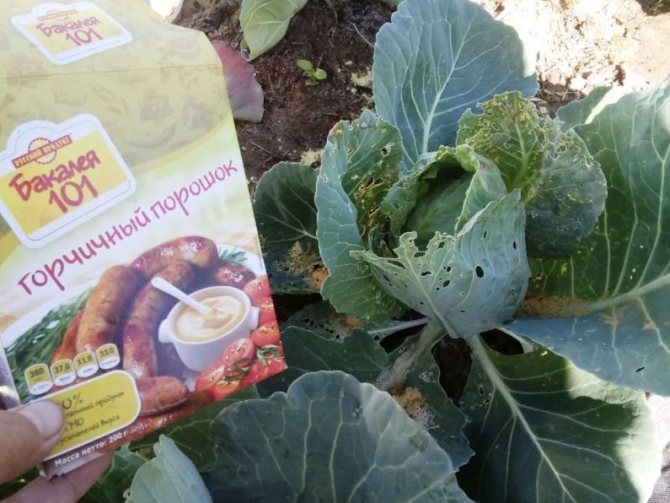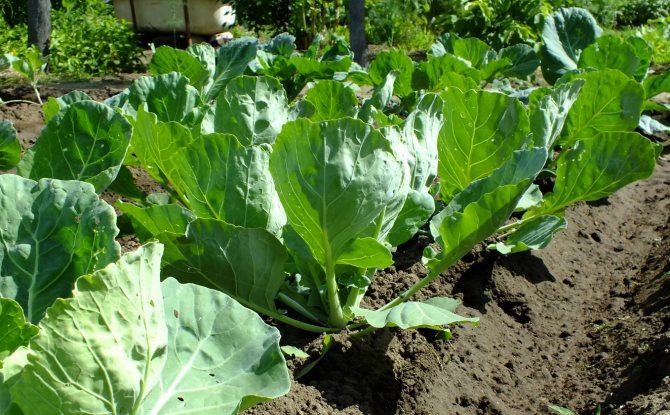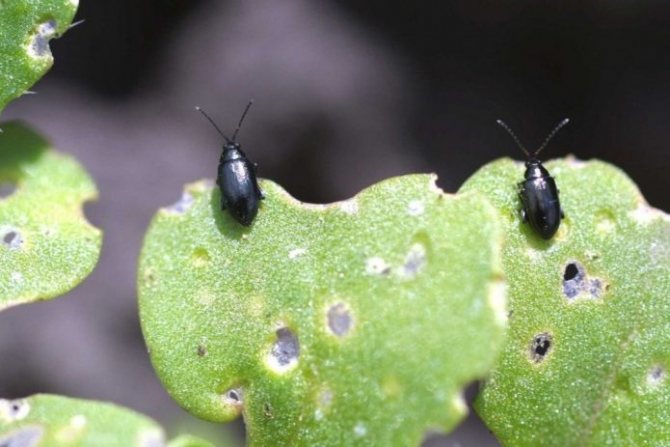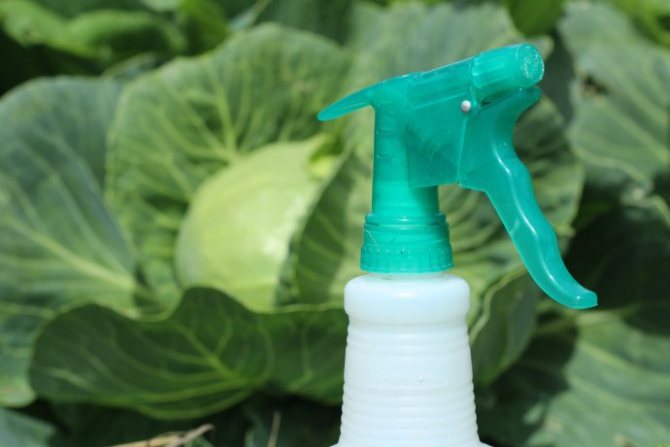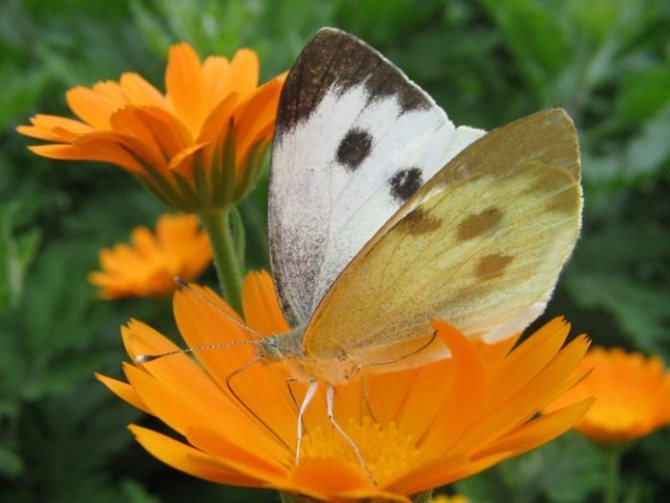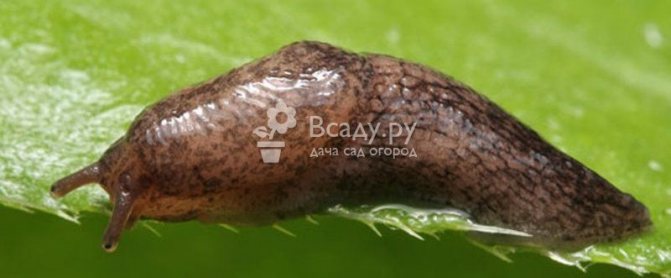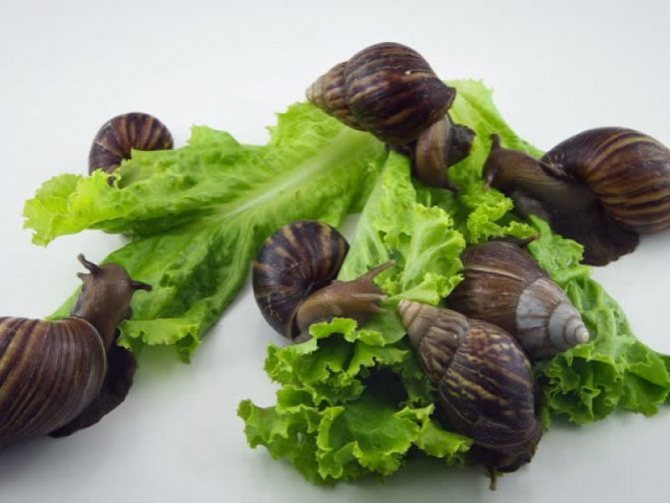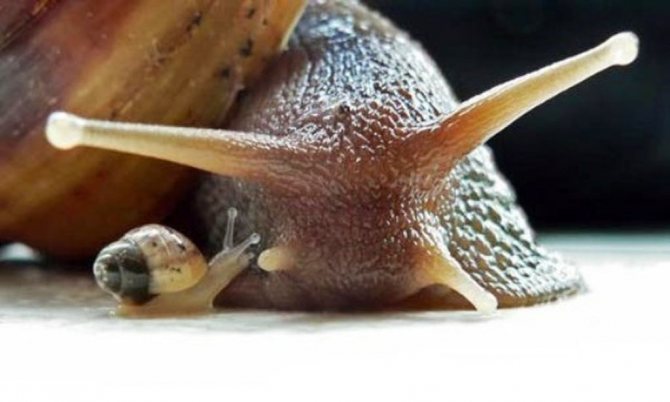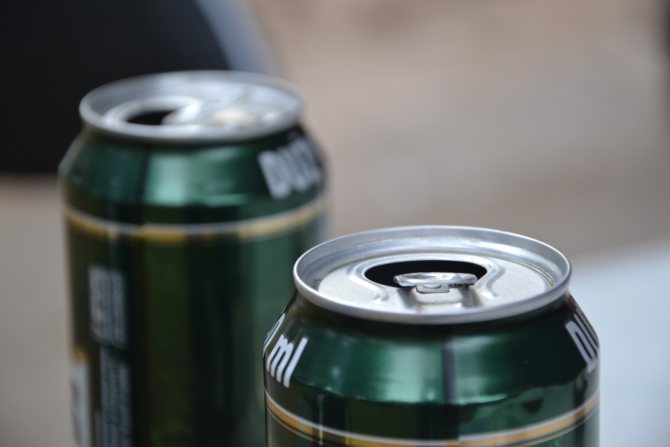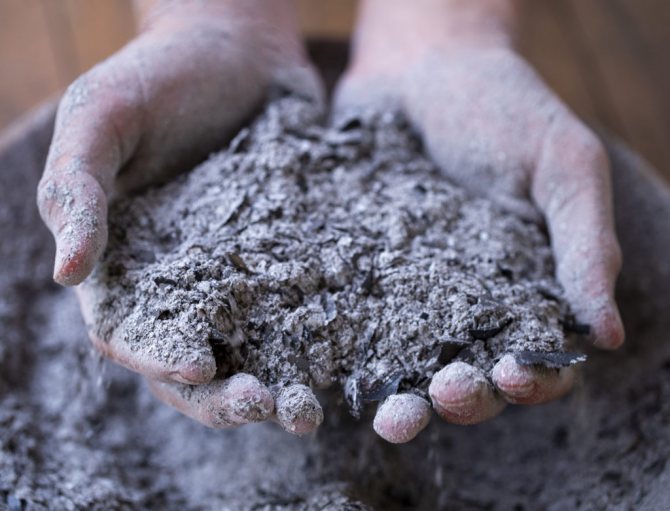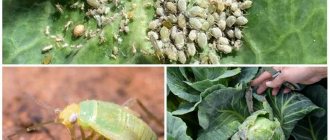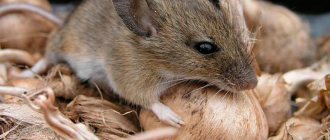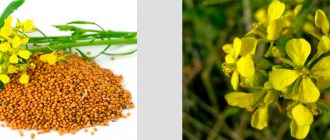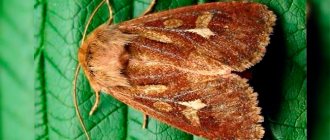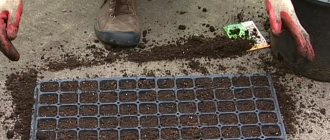Description of the pest
Slugs belong to gastropods, outwardly similar to snails without a shell. The body is soft, abundantly covered with a layer of protective mucus on top. The sizes of these pests can range from 1.5 to 10 cm, and sometimes you can find huge mollusks up to 20 cm long.
They prefer wet habitats, they like to bury themselves in the upper layer of damp earth. They become active in the evening and at night when the heat subsides.
The breeding season is at the end of summer. At this time, they lay eggs in the amount of 150-200 eggs in moist soil. Juveniles come to the surface in spring.
A slug is a gastropod mollusk that has undergone a reduction or complete loss of its shell in the process of evolution. Commonly referred to as slugs are all lung snails from the Stylommatophora group. They lost their shell due to a decrease in calcium consumption in their habitats, and the reason was also the transition to dense thickets of aquatic and forest plants.
Their main habitat is moist soil.
A slug has a head, leg, and body called a visceral mass. The head has tentacle horns that serve as a sense organ. The mollusk moves by contraction of the body. In the process of all life, pests secrete mucus, which serves as their main assistant in moving and scaring off enemies.
With the help of mucus, molluscs hold on to vertical surfaces, and also form slug cords for reproduction. The pest secretes two types of mucus: thin and thick. The secretion of the slug is hygroscopic, it tends to absorb moist vapors from the air - thus the slug's body regenerates constant moisture.
Did you know? The slug breeding process is one of the most amazing in nature. They have male and female genitals. Before mating begins, the mollusk pursues another mollusk, they circle and twist each other into the genitals. Very often they cannot unwind back, as a result of which apophalation occurs - eating their own or other people's genitals, which allows the slugs to detach.
This type of pest affects all types of cabbage: white cabbage, broccoli, Beijing, cauliflower, Brussels sprouts. It should be noted that red cabbage is much less attacked by slugs. Slugs do not tolerate high temperatures, so the period of their activity falls on the evening and night. They eat the leaves of the vegetable and are capable of ruining the entire crop. Sometimes the damage from the transfer of viral diseases from plant to plant is more extensive than from mechanical impact.
Mechanical methods of struggle

The best chemicals for slugs
The biological way of pest control in the garden is the use of special fungi and bacteria. They kill insects naturally without harming people and plants. Ecological farming has already reached a new level of development long ago, and many gardeners use this.
Now popular drugs such as Entobacterin, Lepidocid, Bitoxybacillin and Fitoverm. The drug must be diluted in water (50 grams per bucket of water) and sprayed with cabbage. The solution will enter the insect's body during a meal, and will lead to death.
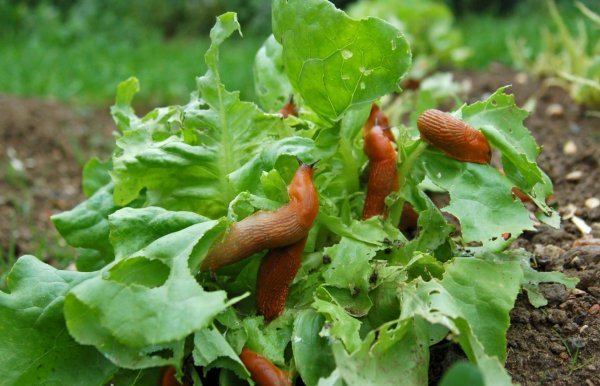

The effect of this method is as follows:
- Germs, bacteria and fungi infect insects, which then get sick and die.
- When pests disappear, microbiological creatures also disappear. Treatment with the drug is performed twice a season with an interval of one week.
- Processing stops one week before harvest.
- The effect of the drug depends on the air temperature. If it is below 18 degrees Celsius, then bacteria will not multiply and the drug will not work. If the air temperature is above 30 degrees, then bacteria can die without starting to act.
In order for the heads of cabbage to grow large and resistant to external factors, do not forget about feeding the soil. Starting from the stage of the appearance of young plants, the earth is fed with potassium salt (sulphate or potassium chloride) or superphosphate. During autumn and spring digging, organic fertilizers are also applied, which saturate the earth with useful substances, improve its acidity and serve as the prevention of many diseases.
During the growing season, cabbage should receive at least 3 dressings, which are applied both in dry and liquid form. In addition to slugs, heads of cabbage can be affected by cabbage aphids, cabbage fly, cruciferous flea, cabbage butterfly, cabbage leaf beetle. Cabbage aphid drinks juices from the leaves, which lead to complete dehydration of the vegetable.
The cabbage fly lays the larvae on the heads of cabbage, the penetration of which to the roots leads to the death of the plant. To prevent this, before planting cabbage, you should carry out a deep digging (not less than 30 cm), do not plant the vegetable for several years in a row in the same place, protect the root part with any waterproof material.
A cruciferous flea can be an unpleasant "guest" on cabbage leaves. These small bugs gnaw holes in the leaves of the plant, after which it dries up. Fleas lay the larvae that live in the ground, therefore, the main preventive measure here will also be deep digging of the earth and its thorough fertilization.
Summer residents and gardeners successfully use these methods, since they do not require special costs, are harmless to vegetable crops and the environment, but at the same time they are quite effective in combating these parasites.
- The use of beer allows you to save the cabbage beds from uninvited guests in a short time. To do this, you need to pour the drink, not necessarily fresh, into small containers, saucers or cups. Bury these containers to the very edges in the ground in the garden. The smell will attract many slugs, but since beer has a detrimental effect on molluscs, containers with many of their corpses can be removed in the morning. Instead of beer, you can try kvass or fermented compote.
- Many summer residents collect ash after burning branches, dry grass and leaves. It is not only a good fertilizer for many crops, but also an excellent remedy for parasites. To enhance the negative effect on shellfish, you need to mix the ash with salt, red or black pepper and mustard. For one liter of ash, take a tablespoon of the remaining components, mix thoroughly. Sprinkle this mixture on cabbage leaves every 5 days and after every rain.
- For spraying cabbage from slugs, you can use a mustard solution (100 g per bucket of water), or a 9% bite solution - 2 tablespoons. pour water into a bucket, stir well. Spray in the evening after slugs emerge from their shelters on cabbage leaves.
- A good result can be obtained by spraying the plantings with a solution of ammonia in a ratio of 1: 6. But often this method cannot be used, since the cabbage may begin to dry.
- Hot water is another powerful remedy. It is necessary in the evening, as soon as the parasites crawl upstairs, pour water over each plant with a temperature of 40-41 C. It has a detrimental effect on slugs, but is completely harmless for this vegetable crop.
- It would be good to sprinkle the aisles with lime, it burns the bodies of slugs and, thanks to this, will block their path to the cabbage. Superphosphate can be used in the same role.
We suggest that you familiarize yourself with: How to deal effectively with earwigs in the house and in the garden
These include the collection of pests and their further destruction. To facilitate this task, baits and various traps are used. Boards, pieces of cardboard or roofing material, plywood, slate are laid out on the site. Raise the soil well to moisten. You can also spread apple pieces under the resulting traps to better attract shellfish. The very next morning, a huge number of slugs can be found and destroyed there.
Another great way is to cover the soil of the beds with a film. Slugs will collect underneath, as there will be increased humidity due to condensation. On a hot day, this condensation will heat up, causing the slugs to die.
Laundry soap and a few bottles can be great traps. Pour 100-150 ml of water into each bottle, add a small bar of soap there. Arrange these bottles without caps in the area. The next day, you can collect many dead slugs.
These creatures do not like to crawl on a sharp substrate, so you can block the path to a vegetable crop by sprinkling sawdust, shells of eggs, nuts, and fine gravel around it.
If the above methods did not give the desired result, or the planting area is too large, then you will have to use chemical agents. It is important to remember that these substances are dangerous to humans and animals, therefore personal safety measures must be observed, as well as to protect the treated area from children and pets.
The main substance in the fight against gastropods is metaldehyde. "Groza", "Meta" are well-known preparations based on it. They are small blue or blue granules. Two hours after the mollusk swallows this substance, it dies. Can be used in rainy weather, as the effectiveness of the drug is not reduced.
Signs and causes of appearance
If you notice gnawed holes on the cabbage, as if the leaf is perforated into a fine mesh, this is the first sign of slugs. Action should be taken immediately as crop damage is done quickly. Another sign of their appearance is the silvery stripes on the leaves of vegetables - this is the dried secretion of the mollusc.
It should be noted that the slug is especially active in humid and warm weather: a mild winter, a damp spring and the onset of a rainy, cool summer will be the main harbingers of a troublesome season.
Under these conditions, snails will eat plants even during the day. And, conversely, the onset of a dry summer will reduce their activity, because.
The best chemicals for slugs and caterpillars on cabbage: instructions for use
If initially (even during the period of emergence of the first shoots) you did not take care of preventive measures and noticed the appearance of "uninvited guests", then you need to urgently take measures to eliminate them. Slug control is time consuming but not time consuming.
Sometimes using one of the techniques will help get rid of the slug for the entire season, since the mollusk is sensitive to many components. In addition to traditional methods that have been proven over the years, there are many modern chemical agents for repelling the pest.
Did you know? The longest slug is considered to be a forest black-and-blue slug, which is listed in the Red Book. In a flattened state, the length of its body can reach 30 cm. Despite its impressive size, the black-blue mollusk is not considered a pest, but, on the contrary, is an important inhabitant of the forest and an indicator of forest soil.
Collecting manually
The easiest way is to walk around the garden every day and collect slugs by hand. The advantage of the method is that you do not need additional funds and costs for it, however, its effectiveness can be argued. The bypass will have to be done every day, since new ones can creep into the place of the utilized parasites.
To protect the cabbage from new "attacks", after the first round, preventive measures are taken. For example, crushed eggshells, crushed stone, crushed bricks, sand or nutshells are poured around each plant. The fact is that the slug's body is very sensitive to mechanical damage, so in this way it may not get to the coveted cabbage bush.
To make the manual harvesting process less time-consuming, traps are set up in the garden beds; snails are attracted by the smell and taste of fermented syrup, beer, compote, or jam. You can arrange "treats" in transparent glasses by digging them into the ground. Since snails have a highly developed sense of smell, by the morning you will find dead "guests" near each trap.
The disadvantage of this method is that beneficial insects, for example, bees, will flock to the sweet bait. For the manual method, wet boards, logs, moss, wet rags can also be used as traps, under which slugs will hide during a hot day.
The use of chemicals in the fight against slugs takes place during a mass invasion and the ineffectiveness of other methods. All chemical preparations for this pest are based on the main component - metaldehyde. One of the most popular and effective means is the "Thunderstorm" killer mixture. It is one of the few chemicals aimed at directly fighting slugs and snails. It acts as a poison through contact with the gastrointestinal tract of the mollusc.
Important! Pure metaldehyde can be used as a chemical, but it is dangerous not only for other animals, but also for humans, so its dosage should be applied strictly according to the instructions.
The product is in the form of granules and is used dry (without being dissolved in water). The granules are laid out under each cabbage, taking into account the proportion of 15 g (1 sachet) per 5 m² of garden area. "Thunderstorm" contains substances that lure the slug with its smell, after eating the granules, the pest dies after 2 hours.
We suggest that you familiarize yourself with: How to get rid of caterpillars on cabbage with folk remedies
The second popular remedy is Meta, which is also eaten by slugs. It looks like dry granules and is used similarly to "Thunderstorm". Granules "Bros", "Ulicid", "Antilimacos" are also used for slugs. Agrozin has a liquid form and is used as a solution for structuring and restoring soil fertility. Its use has proven to be effective against slugs.
Experienced summer residents argue that the use of folk remedies in the fight against slugs can be no less effective than chemicals. Snails are sensitive to many components, therefore, among the people there are several options for solutions that will ward off them from cabbage:
- Strong coffee solution. A double dose of ground or instant coffee is brewed, which is sprayed on each cabbage bush. For a vegetable, coffee is not harmful, but its smell is unpleasant for gastropods.
- Vinegar solution. Table vinegar 9% is diluted with water in the proportion of 0.5 cups to 10 liters of water. This mixture is watered around each head of cabbage. Vapors of vinegar are able to drive away "uninvited guests".
- A solution of ammonia. Alcohol is diluted with water in a 1: 6 ratio. The solution is sprayed on heads of cabbage of any kind, this does not harm it.
- Salt solution. A strong salt solution is made and applied to the bushes by spraying.You should not be zealous with this remedy, since salt dehydrates the vegetable fruit.
- A solution of mustard powder is mixed with water in a proportion of 150 g per 5–8 liters of water and the cabbage is treated by spraying. You can also moisten the soil around each cabbage bush with it.
Important! Before planting cabbage, it is necessary to remove all excess garbage left over from the last season: boards, rags, branches, logs, unnecessary household appliances. Since slugs and snails like to hide in humid and shady places during the daytime, such things on the site will attract their attention.
In addition to solutions, the organization of furrows or ditches along the territory of the garden is used. The most popular and sure-fire way to scare away slugs is ash. Its smell is intolerable to gastropods. The use of ash is a pest control, which in 99% of cases is effective and proven over the years. In addition to ash, you can fill the ditches with tobacco or sulfur. This procedure will need to be carried out throughout the season after each precipitation.
In order not to waste time on pest control, you should worry about the safety of vegetables in advance. There are a number of preventive measures that can help prevent slug infestations. They include both medicinal and folk methods. The main attention should be paid to the cleanliness and maintenance of the garden plot.
Be sure to get rid of last year's compost piles. Cabbage should be planted freely, since dense foliage can also serve as an attractive "place of residence" for molluscs. Throughout the season, you need to take care of the timely collection of weeds and mowing the grass so that slugs do not hide in tall vegetation.
Gardeners advise covering early heads of cabbage with a film. The created greenhouse conditions under the scorching sun become unbearable for the slugs and they die. Many summer residents say that mollusks are afraid of nettles and die from its burns. To do this, nettle grass is wrapped around each head base (instead of nettle, hot pepper is sometimes used).


Slugs on cabbage
Gardeners are increasingly using folk methods for pest control. They are safe for green crops and human health. Today, there are many popular ways to combat cabbage caterpillar and slugs. Here are some tips before getting started:
- Treat crops in the morning or evening, but not during the scorching sun, as this can harm the plants.
- If it rains after processing, the procedure will have to be repeated, otherwise the caterpillars will attack the beds again.
- Do not make the solution for future use. Prepare it for one time just before use.


Here are some effective ways to deal with cabbage slugs:
- Beer. It doesn't matter which beer you use: stale or fresh, caterpillars are attracted by the smell of this drink. Prepare some small plastic containers or regular glass jars. Bury them near cabbage bushes, and pour beer into the container. The mollusks have a delicate scent, they will immediately feel the aroma that attracts them, and crawl towards it. After they enter the beer tanks, you need to collect the slugs and burn them outside the garden.
- Instant coffee. It is necessary to brew double instant coffee and sprinkle cabbage leaves with this drink. It helps well not only for slugs, but also for cabbage flies.
- Traps. You can make them from old rags that need to be wetted. Burlap or even old boards will do. Wet the surface of the board or cloth well with water and lay it out near the beds. When the slugs crawl onto the wet traps, collect them and burn them behind the site.
- Close access to the beds. It is known that caterpillars and slugs crawl, moving with the sole on the abdomen on flat surfaces.So that they do not make their way to the beds, you can pour crushed shells of eggs, nuts, shellfish or coarse sand around the perimeter of the cabbage planting. Such a rough surface is an obstacle for slugs, since wounds can appear on their thin body.
These are some of the simplest and most effective ways to combat cabbage pests. There are other methods of struggle as well. Read below.
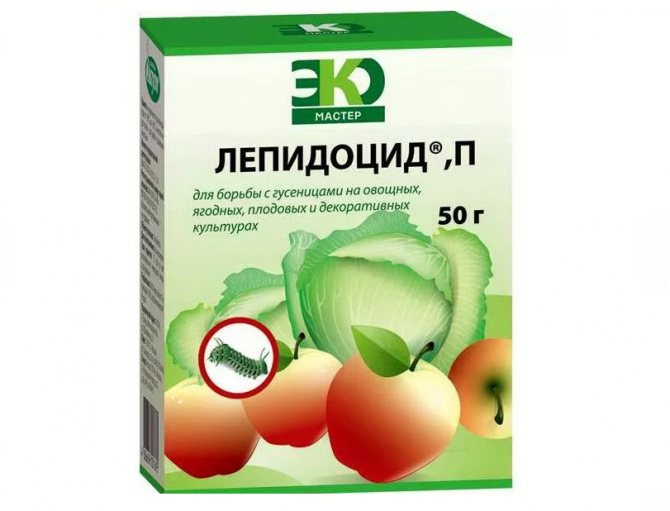

Lepidocide
Everyone knows that prevention is better than cure. This popular saying applies to gardeners as well. In order not to lose the harvest from the invasion of slugs, caterpillars and other pests, you need to take care of this in advance. Important preventive measures are as follows:
- Planting fragrant herbs and flowers. Their smell will scare away pests. You can use calendula, coriander, lovage and celery. These plants also attract beneficial insects to the garden, such as ladybugs and other bugs. They feed on aphids and caterpillars.
- Attract birds to the garden. They feed on insects and help clear pests from the garden.
- You can use a thin spunbond or fine mesh net to cover the beds to block the way for butterflies to lay their larvae.
- Remove weeds thoroughly. They attract butterflies.
- Inspect the cabbage leaves underneath and remove clutches of eggs.
- Monitor the growth of the plant during the entire growing season, feed, process, as a strong plant will be able to withstand the invasion of pests.
- Process the seeds before germinating. For example, in a baking soda solution: for 1 liter of water, 5 grams of soda. Stir and soak seeds for 24 hours.
We suggest that you familiarize yourself with: How to catch a mouse at home
We recognize the enemy by sight
Unlike snails, the body of these molluscs is not covered with a shell. The protective function is performed by an abundant layer of mucus. Bright iridescent "mica" traces in the sun are a characteristic marker of the presence of these pests. They are visible in the morning both on the affected plants and on the garden paths. Many slugs dry up in the most visible place, not having time to hide before the warm morning sun appears.
During the day, the mollusk lays in a damp, cool place protected from the sun, and closer to dusk they crawl out to feed. In the morning, a significant part of the individuals, without much bothering themselves, crawls under the upper leaves of the heads of cabbage, hiding from the sun. If the day is cool and cloudy, slugs may not hide at all, but continue to eat in full view, as if nothing had happened.
From my own experience, I will say that you are unlikely to find a 100% effective instant remedy. Slugs reproduce very quickly - they eat almost everything, including potato tops.
Biological fight against caterpillars and slugs: recommendations, preparations, instructions
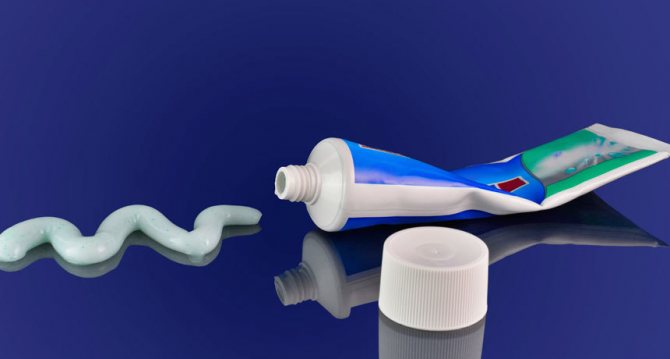

Toothpaste
Seasoned gardeners have long been using toothpaste to combat garden pests. You don't have to buy new tubes for this.
- You can collect used tubes during the winter, and then, when it's time to fight insects, cut them up and soak them in a bucket of water for a day, and in the evening stir the solution and spray the cabbage.
- If you threw away the used tubes and you need to fight pests now, then buy the cheapest toothpaste. Then dissolve 2 tablespoons of this dentifrice in a bucket of water and spray on the cabbage in the evening - at sunset.
In the morning you will not find a single insect in the beds. Where they go is unknown. Most likely, insects will crawl to another place. But you don't even have to remove the fallen bodies of slugs or caterpillars from the beds - it's convenient.
Lepidocide
Artificial shelters
Experienced gardeners do not get tired of thinking about how to get rid of slugs on cabbage. Reviews emphasize that if you do not want to resort to the use of chemistry, then it is best to attract pests to some object from which they can be collected and destroyed.The easiest way is to take pieces of slate, wet rags or boards and lay them around the cabbage and strawberries. Every morning you will need to raise the shelter and collect the snails that have huddled under them. What are the disadvantages of this method? Pests will calmly gnaw your plantings, and on the way back they will hide under helpfully laid out shelters.


Preventive actions
The main goal of prevention is to create unfavorable conditions on the site for the life of slugs. So they will not multiply in huge numbers, and their numbers can be reduced to zero by the above methods of struggle. It is necessary:
- remove all plant waste from the site, as well as construction rubbish such as old boards, pieces of film, etc., since these places are often hiding places for slugs;
- timely weed out the weeds in the garden bed, as well as mow the grass not only in the territory adjacent to the site, but also in the paths between the ridges;
- do not plant vegetables too tightly, especially cabbage;
- often loosen the soil, and in the fall it is imperative to dig up the whole garden.
Thanks to this comprehensive approach, you can not only get rid of slugs, but also prevent their reappearance, save the harvest of cabbage and other vegetables.
General information
The naked snail is a thunderstorm of strawberries and cabbage, as well as other delicate plants. On adults, in the morning you can see large holes and a silvery trail that the pest leaves. And they eat young plants entirely and without a trace. They feed exclusively at night, so if you are looking for the most budgetary way to get rid of slugs on cabbage, then go out at night with a lantern and a bowl and a strong salt solution. It is designed to drown intruders. However, this is a tedious activity, and not everyone wants to take the slippery creatures with their hands. Therefore, we choose from the presented methods the one that seems the most attractive.
How to treat cabbage from caterpillars and slugs with baking soda: folk recipes
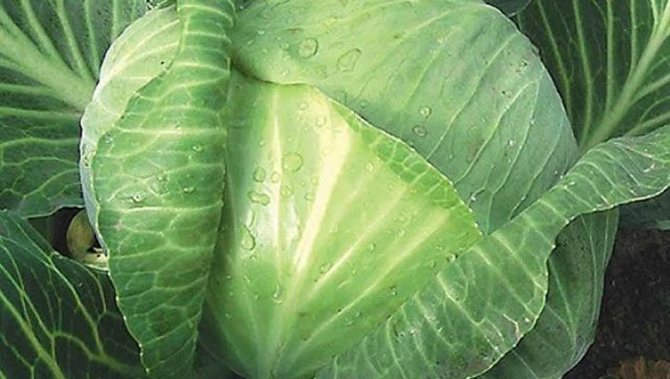

Healthy cabbage leaves without slugs
A baking soda solution is one of the most effective ways to control pests in your garden. Baking soda is used in a variety of forms, but more often as a solution. Experienced gardeners use this antiseptic even at the stage of seed soaking, as a preventive measure, but this will be discussed below.
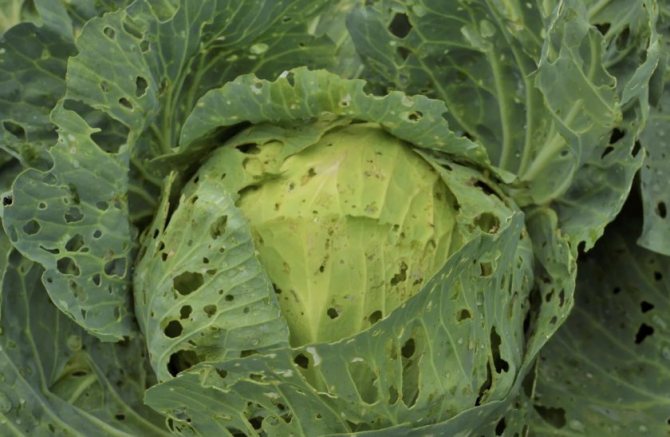

What to do if slugs are already on the cabbage leaves, how to treat them with baking soda? Here is the prescription:
- Dissolve 10 grams of baking soda in 5 liters of warm, settled water.
- Stir well and sprinkle on the leaves.
You can even water the beds with this solution, since baking soda also fertilizes the soil, replenishing the lack of nutrients.
You can also mix baking soda with ash (2 tablespoons of baking soda per liter can of ash) and sprinkle cabbage leaves with this powder. After the rain, this technique will have to be repeated.
Another recipe for fighting slugs:
- Dissolve 10 grams of soda in 5 liters of water.
- Add 2 gristle of plain white flour and stir well.
- Then collect the pollen (how much you get - you won't collect much) and also put it in the solution.
- Stir the mixture well and drizzle over the cabbage leaves.
Slugs and caterpillars that fall off should not lie or crawl between the beds. They need to be collected and burned outside the garden. This recipe is used by older experienced gardeners as the best cabbage pest control recipe.
Making the terrain impassable
Since it is not always possible to get rid of slugs on cabbage using folk methods (for example, they live in a neighboring area and periodically crawl to you), you can make vegetable beds unattractive for snails. There are several ways to do this:
- Take wood ash, add a spoonful of ground pepper, salt and mustard to it.This mixture is scattered between the plants and the soil is loosened a few centimeters.
- Naked snails do not like to crawl on coarse sand. It hurts their tender abdomens. You can make a mixture of sand, pine needles, sawdust and lime, ash, and any other ingredients you see fit. The main thing is that uninvited guests do not like to crawl on such a surface. You can also add soot, it is very caustic.
If you notice that one bed is regularly attacked by pests, then you can try the following recipe. Mix coarse sand with vitriol and sprinkle the earth between the cabbage. By the way, this procedure is easier to perform if the plants are not planted too tightly.
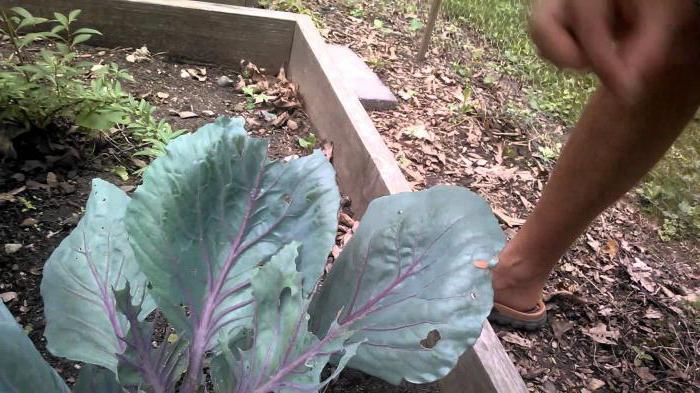

How to poison caterpillars and slugs on cabbage with vinegar: folk recipes


Cabbage leaves eaten by slugs or caterpillars
To combat cabbage pests, 9% table vinegar is used. Here are the effective recipes you can make in a matter of seconds:
- Add 2 cups (400 ml) vinegar to a 10 liter bucket of water. Mix well and sprinkle with cabbage leaves. Perfectly helps to cope with pests on seedlings or already adult heads of cabbage.
- Dissolve 1 cup of 9% vinegar and 50 grams of ammonia in 10 liters. Stir the solution well and sprinkle on the leaves. Helps with slugs and caterpillars of the Repnitsa and Belyanka butterflies.
- Dissolve 1 cup of 9% vinegar and 2 tablespoons of coarse salt in 10 liters of water. Moisten the leaves generously with the solution. Helps with butterflies, cabbage moths and slugs.
Vinegar is always in the house, so you can prepare such a solution without difficulty. Spray it on the leaves every 10 days and after rain.
Poison the snails
And next in line is the next recipe in their series, how to get rid of slugs on cabbage. Many pests can be removed with vinegar, and snails are no exception. And you don't have to worry about the plants. The permissible concentration is completely safe for cabbage, strawberries and other crops. You need to take a glass of 9% vinegar and mix it with a bucket of water. This solution should be sprayed with cabbage late in the evening. It is important that the solution remains on the leaves when the snails begin to crawl out on them. The mixture should get on the pest's body and cause burns.
Ammonia from caterpillars on cabbage: folk recipes


Ammonia
If you did not have the necessary ingredients and you could not prepare a solution according to the above recipes, then you can use ammonia. Prepare the following mixture from it:
- Dissolve fifty milliliters of ammonia in 10 liters of water.
- Add 1 glass of ash.
- Stir and spray the plants in the evening before sunset. Two such treatments per season are enough.
Instead of ash, you can add 2 tablespoons of shavings of laundry soap to the solution. Thanks to the soap, the solution will stay on the leaves for a long time and drive away slugs and caterpillars. Such a mixture of drugs and water will surely drive harmful insects out of the garden.
Bay leaf against caterpillars on cabbage: folk recipes
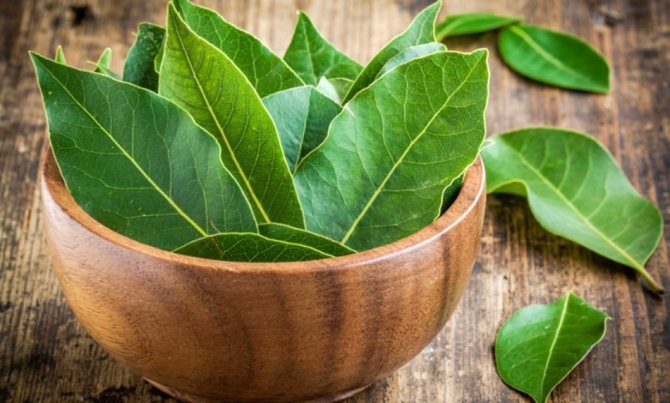

Bay leaf
The easiest way to deal with caterpillars and slugs on cabbage is to spread the bay leaf in the garden next to the crop seedlings. The smell of lavrushka will scare away insects. You can also make a solution that will effectively help in the fight not only with these crawling insects, but also with the cabbage fly.
- Pour ten grams of bay leaves with one liter of boiling water.
- Insist the solution for half an hour or an hour, until it cools completely.
- Then thoroughly moisten the leaves with this solution, repeat after five days and after rain.
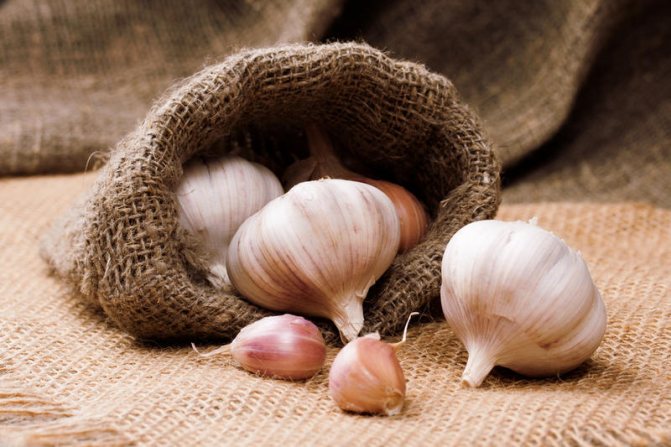

Garlic
Garlic is known to everyone as the best antiseptic in the fight against microbes and bacteria of various origins. Gardeners also use it if they need to remove slugs and caterpillars from cabbage. Here is the prescription:
- Make an infusion with tomato leaves, onion stalks, and garlic (both stems and heads can be used).
- The solution should be rich and odorous.You will need about 3 kilograms of tomato tops, 1 kilogram of onion and garlic feathers, or 10 heads of garlic. Instead of onion feathers, you can use onion peels (how much will fit in a half liter jar).
- Pour boiling water over all this (10 liters) and leave for 24 hours. Then sprinkle on the cabbage.
If you don't want to pick tomato tops and onion skins, you can chop 10 heads of garlic and add 8 liters of boiling water. Let the solution stand until it cools, and then moisten the cabbage leaves with plenty of it.
Bait
Speaking about how to get rid of slugs on cabbage, I would like to note that they can be effectively distracted from leafy vegetables with some delicacy. This can be an apple or potato left on the path, a cucumber or a small squash. Snails are lazy, they will stop and enjoy the gift left for them. If you go out into the garden early in the morning, you can collect them together with the half-eaten apple and destroy.
The second option for getting rid of slugs on cabbage is a trap bait. Moreover, in order for it to be attractive to pests, it is recommended to fill a cup with beer. By morning, a large number of snails should have gathered in it, which will only have to be destroyed. The use of burdock leaves is also often mentioned. By themselves, they are attractive to snails, if only as protection from the sun. And if you dip them in beer and spread them out on the paths between the beds, then in the morning you can harvest a whole crop of pests.

